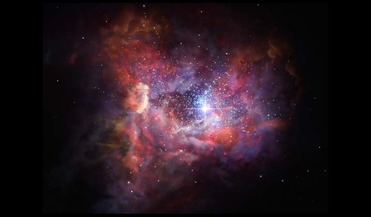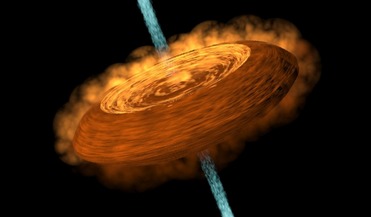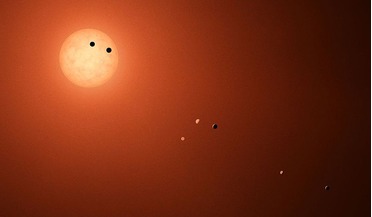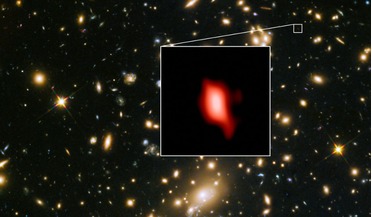 08 March 2017
The most distant galaxy yet observed by ALMA gives insight into first stars
08 March 2017
The most distant galaxy yet observed by ALMA gives insight into first stars
... shed light on how quickly the dust in A2744_YD4 formed,” explains Richard Ellis, a co-author of the study from ESO and University College London. “Remarkably, the required time is only about 200 million years — so we are witnessing...
 10 April 2017
Super-Jupiter mass planet found in the galactic bulge
10 April 2017
Super-Jupiter mass planet found in the galactic bulge
... on Mauna Kea, Hawaii, the Canada France Hawaii Telescope (CFHT), and the VST survey telescope located at at ESO’s Paranal Observatory, its discovery is unlikely to be invalidated. All telescopes were observing the event as part of the “Campaign...
 20 April 2017
ALMA research team captures first clear image of accretion disk around a star
20 April 2017
ALMA research team captures first clear image of accretion disk around a star
... comparison. (c) An accretion disk model that can reproduce the observed dust emission in the disk. Credit: ALMA (ESO/NAOJ/NRAO)/Lee et al. Accretion disks are most likely made of silicate, iron, and other interstellar matter...
 19 May 2017
Exoplanets galore and possibly the next Trappist-1 system?
19 May 2017
Exoplanets galore and possibly the next Trappist-1 system?
... system, with hints that there might be more. The instrument in question is the HARPS spectrograph located on the ESO 3.6 metre telescope at La Silla Observatory, Chile and both teams utilised the HARPS Guaranteed Time Observation list...
 17 January 2018
First inactive stellar-mass black hole found in a globular cluster
17 January 2018
First inactive stellar-mass black hole found in a globular cluster
... heart of this discovery is located in the southern constellation of Vela (The Salis). While observing the cluster with ESO’s MUSE instrument on the Very Large Telescope in Chile, astronomers noticed that one particular star that is on its...
 16 May 2018
Astronomers find stars forming just 250 million years after Big Bang
16 May 2018
Astronomers find stars forming just 250 million years after Big Bang
... research. This discovery also represents the most distant galaxy ever observed by the observatories that studied it; ESO’s Very Large Telescope (VLT) and the Atacama Large Millimeter/submillimeter Array (ALMA) – an array that has...